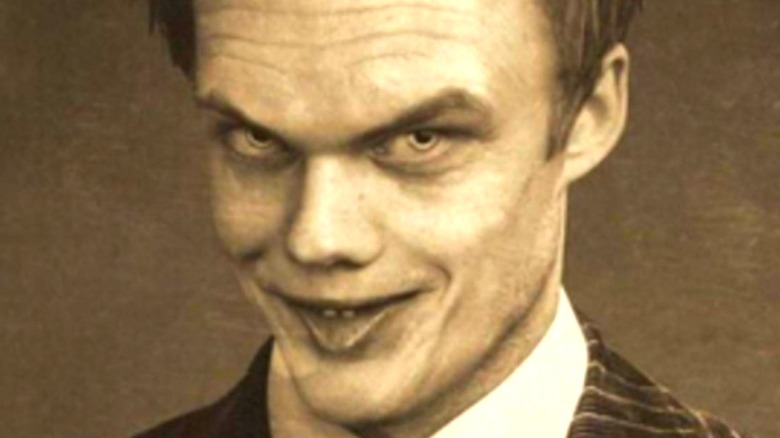
You know the feeling. You're watching a horror movie and you're loving it. You're grooving on it. You're leaning forward in your seat, anticipating the next scare, the next kill, the next revelation. "This movie is going to stick the landing," you think to yourself.
Famous last words.
Maybe it's a boneheaded character choice, a sudden change in tone, or the pacing slows to a crawl just when things should be speeding up. Maybe it's a plot twist so stupid you can no longer take the whole thing seriously.
The /Film horror brain trust got together to come up with some of these moments -- the ones when something good spirals out of control. Some of the movies on this list are still quite good (there's even a bonafide masterpiece or two!), but their third-act issues drive us absolutely insane. Others are entirely undone by something that swoops in at the last second to leave a bad taste in the mouth.
These are the 25 horror movies whose endings drive us completely nuts. And by extension, the endings we love to complain about. Spoilers ahead for a bunch of movies, of course.
Signs
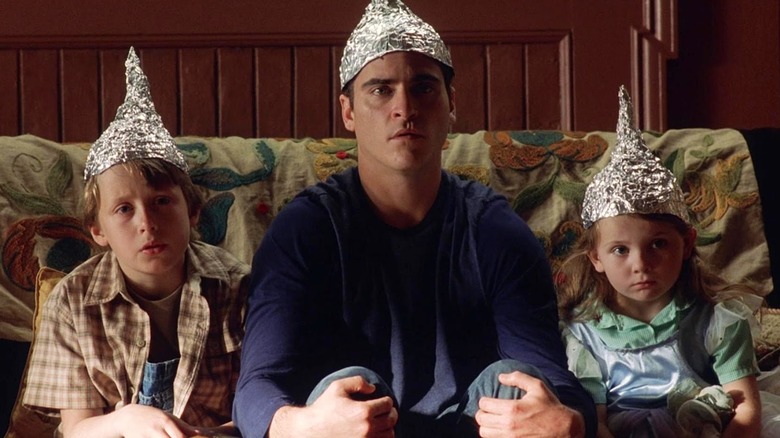
"Signs" can, overall, be considered one of M. Night Shyamalan's most effective movies. It has one of the greatest jump scares of all time and feels extremely personal with some great performances.
All of that having been said, the whole realization that "it's water" that's their weakness and the ending with the baseball bat is a bit anti-climactic for an alien invasion flick. Though some audiences have been harsher on its conclusion than others, it's easy to see why this might take a bit of the wind out of the sails in the third act of an otherwise compelling sci-fi flick. Despite this, the sum total of this movie's parts makes it worth anyone's time, even by today's standards. It's aged surprisingly well. And although a better ending might have put this in "Sixth Sense" territory, "Signs" is largely (and unfortunately) relegated to the realm of relatively frustrating cinema. (Ryan Scott)
Psycho

Alfred Hitchcock's "Psycho" is a masterpiece. Straight-up. It's a near-perfect blend of pitch-dark humor, gruesome chills, and ahead-of-its-time trolling. Time has not dulled its razor-sharp edges and immaculate filmmaking. But this is a near-perfect movie, so let's talk about that "near" part.
In the famous third act, we learn that Norman Bates' mother is long-dead, a carefully preserved corpse who spends her days literally sitting around the house. It's Norman himself, the victim of a psychotic break who is driven by an alternate personality, who has been committing the murders throughout the film. The scene where we learn the truth about Mother and Norman, with that spinning corpse and that swinging light? Incredible. The final scene where Norman/Mother sits in the hospital, biding their time with a chilling grin? Doubly incredible. But between those two scenes, the movie slams on its brakes to bring a psychiatrist into the picture, who slowly and methodically explains this big twist to the entire assembled cast.
The why is obvious: many audiences in 1960 needed to have such a shocking revelation spelled out for them. But it's a literal spoon-feeding of information we already inherently understand thanks to Hitchcock's deft filmmaking and Anthony Perkins' incredible performance. One of the greatest horror movies of all time literally pauses for 10 minutes to make sure we "get it."
Yes, we get it. It was bad decades ago, and it's still bad now. (Jacob Hall)
Sinister
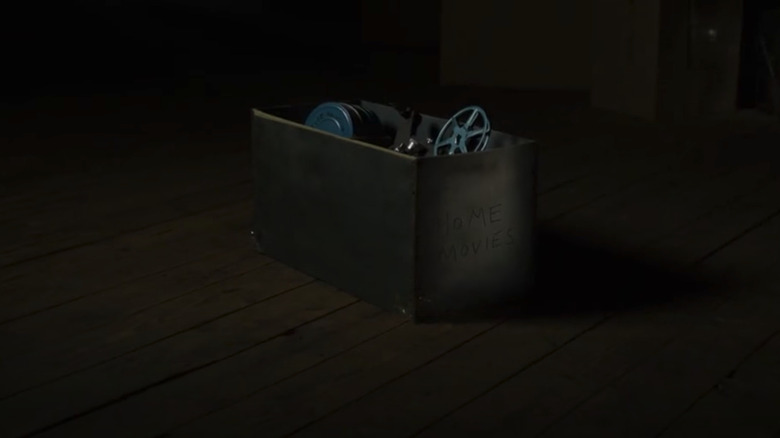
Home to what /Film considered the scariest movie scene ever, the ending of "Sinister" isn't even particularly bad, compared to some of the other whoppers on this list. But the rest of the movie is so above and beyond that the last frame feels unnecessary.
After Ethan Hawke's character, Ellison, has solved the mysteries of Bughuul, the missing children, and the massacred families, he and his family find themselves as the latest victims. His daughter, Ashley, has become possessed by Bughuul and has poisoned her family in order to knock them unconscious. When Ellison wakes up, Ashley murders them all with an ax, and uses their blood to paint images on the walls of the house, including Bughuul's symbol. We cut to see Ashley watching her own murderous home movie when Bughuul appears, grabs Ashley, and teleports the two of them into the screen. We're left with the lone box of films sitting in the Oswalt family's attic, now including Ashley's reel titled House Painting '12.
The camera pulls away from the box only for Bughuul's scary-looking face to pop into the frame for one last scare. It's a cheap pop-up jump scare, and given the tone of this psychologically haunting film, the scare feels completely out of place. "Sinister" could have ended on the shot of the home movies and let audiences leave the theater with a lingering sense of dread. Instead, they had their adrenaline spiked for no reason and left on a note of annoyance. (BJ Colangelo)
The Faculty
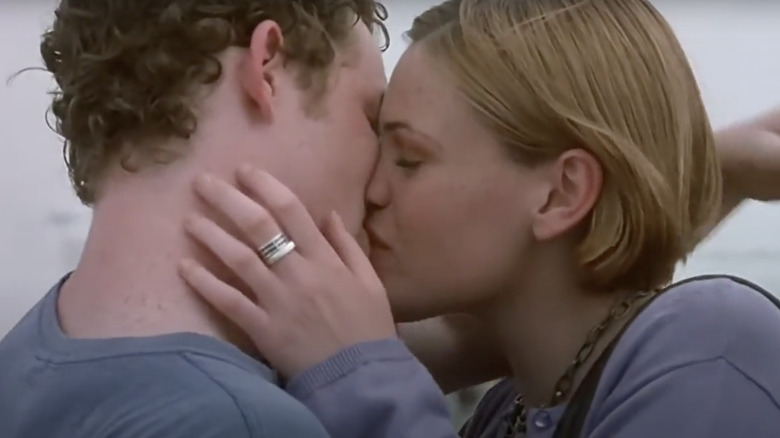
Essentially "Invasion of the Body Snatchers" for '90s teens, "The Faculty" is one of the most beloved teen horror flicks for a generation. Directed by Robert Rodriguez and written by "Scream" screenwriter, Kevin Williamson, "The Faculty" features an alien invasion that turns everyone they infect into the conservative human ideal. A group of students from various cliques a la "The Breakfast Club" join forces to take down the aliens, trying to save themselves and their community from becoming brainwashed conformists.
The film ends with a fast-forward to a month after the invasion, and our heroes have completely changed. Drug dealer Zeke is now a football star (and possibly dating his teacher played by Famke Janssen), nerdy Casey and the most popular girl in school, Delilah, are now dating, while former football star Stan is now an academic, and lesbian-coded goth Stokeley is now kissing Stan and wearing a lavender cardigan, nary a black smudge of eyeliner to be found.
It feels like the ending betrays the entire heart of the movie that came before it, delivering a palatable happy ending that just doesn't fit. Plenty have tried to headcanon a way to make it make sense, but the honest truth is that "The Faculty" is awesome and the ending bites the big one. (BJ Colangelo)
Splice
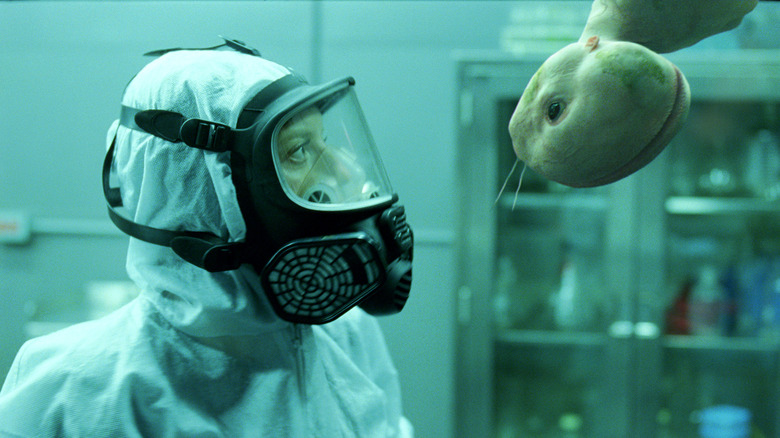
Vincenzo Natali's 2009 sci-fi thriller "Splice" is a modern interpretation of the "Frankenstein" tale that takes things a tad too far. When hybrid specialist geneticists Clive (Adrien Brody) and Elsa (Sarah Polley) secretly experiment using human DNA, things get a little weird. They create Dren, a hybrid being that's part human, but mixed with the DNA of numerous other species. Clive and Elsa grow to care for Dren as more than just an experiment, but also something like a surrogate child. Dren ages at an accelerated rate, and as she grows, she becomes more difficult to control.
It's when Dren reaches sexual maturity in the back half of the movie that things start getting a little more morally unpleasant than just playing around with some DNA.
Dren and Clive have sex, and while it's entirely consenting on both of their parts, it feels weird given that Clive has been a surrogate father to Dren for most of the movie. It gets worse when Dren appears to die suddenly and Elsa and Clive bury her in the woods. She apparently wasn't dead, though, and comes back in a male form to rape and impregnate Elsa, whose DNA was used to create them. The movie ends with the pharmaceutical company that Elsa works for begging her to keep the baby because the DNA contains so many miracles of science.
She agrees, of course, because there's a massive payout and the promise of eventual prestige. Yuck. (Danielle Ryan)
Becky
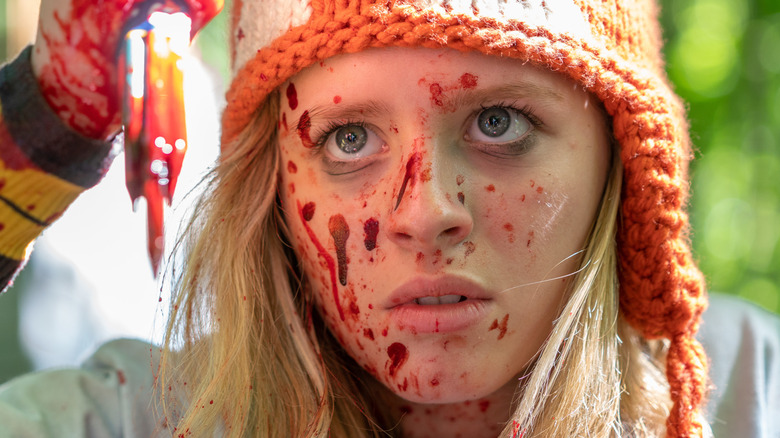
The 2020 action thriller "Becky" stars Lulu Wilson as the teenaged Becky, who's trapped on vacation with her dad and future stepmother and stepbrother. A group of convicts, led by a vicious neo-Nazi (Kevin James), attack the cabin looking for a key to Nazi treasure. Becky ends up fighting them off in a movie that's as if "Home Alone" was a horror movie. She kills Nazis in increasingly gruesome ways and faces off one-on-one against James in a climax that's a gory blast.
The problem with "Becky" lies in the moments after the carnage has ended. Psychiatrists talk about the levels of violence she committed, and she smiles while playing with the key on a chain around her neck. The movie hints that maybe Becky is just as bad as the men she killed, and she's become infected with that violence. The girl that we were rooting for the whole time might actually be a monster, too, and that really hurts the otherwise fun Nazi-stomping, adrenaline-pumping brawl of a movie. (Danielle Ryan)
The Ritual
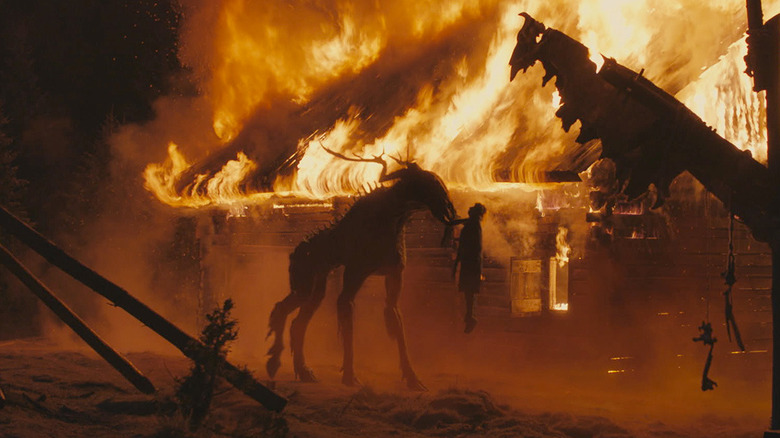
David Bruckner's "The Ritual" is a haunting film about guilt, grief, and male bonding rituals. It's about four friends — Phil, Dom, Hutch, and Luke — who go on a hiking trip along the Kungsleden trail in northern Sweden in memory of their friend, Rob, who passed away in a tragic accident. As their trip progresses, the ugly truth of what happened to Rob becomes unavoidable, and Luke (Rafe Spall) has to face his negligence.
It's a powerful movie. No question about it. And there's an incredible creature design with the god-like Jötunn that stalks the group throughout the Scandinavian wilderness. But despite the film's weight and truly chilling moments, its finale is lackluster, to put it mildly.
After watching the rest of his friends get picked off one by one, Luke is the only one left standing. Held captive by the Jötunn's worshipers and awaiting his own ritual, he breaks free only to torch the mummified worshipers in the building, drawing the vengeance of the creature. The two have a prolonged face-off in what has tonally become a completely different movie before Luke finally escapes that part of the woods. It winds up feeling very disjointed, doing no favors for an otherwise excellent film. (Ariel Fisher)
Escape Room: Tournament Of Champions
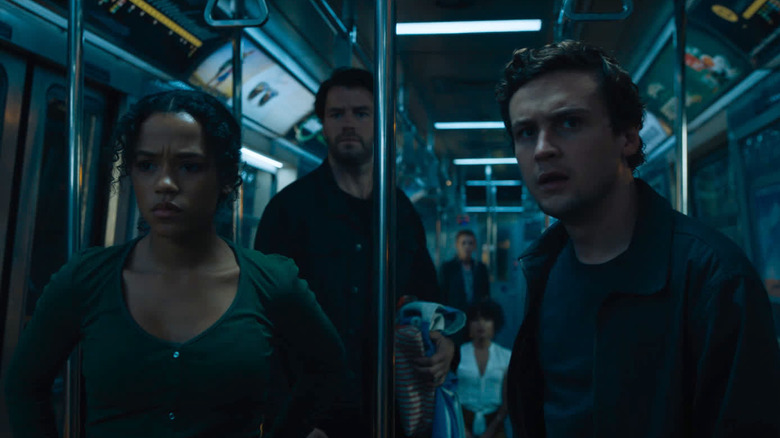
Audiences are definitely buying what the "Escape Room" movies, for the most part, are selling so far. It's "Saw" with a real-life twist and folks are here for it. That said, the problem that remains after watching "Escape Room: Tournament of Champions," is the need to tie each entry together.
The idea of pitting the so-called winners against one another in the sequel is a strong one, but the continuity didn't need to extend beyond that. The ending of the sequel clearly has to do with the current franchise landscape of things needing to be serialized, whereas they could have just put a bow on this one and focused on a new group of people, with a different story, in different escape rooms, in a possible third entry. Instead, it's all connected. Will audiences still go see the potential "Escape Room 3" for whatever cheap thrills it has to offer? Undoubtedly! It just feels like there was a better way to go about it, rather than anchoring the whole thing to continuity that nobody really cares about. (Ryan Scott)
The Descent (UK Ending)
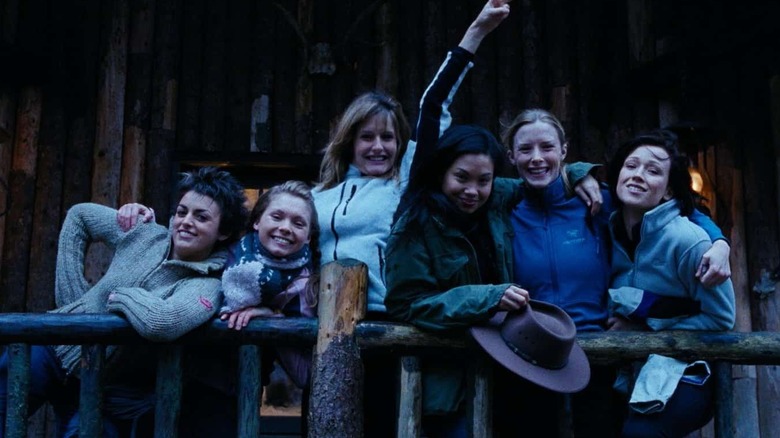
2005's "The Descent" is highly regarded as one of the best horror movies of the new millennium, but the UK-made film has an entirely different ending than the one shown to American audiences. Despite being the finale originally intended by director Neil Marshall, the UK ending of "The Descent" is arguably the weaker version.
In the US version, protagonist Sarah (Shauna Macdonald) escapes the cave, gets in her car, and attempts to drive away only to be shocked by her hallucinatory vision of her dead friend, Juno, sitting in her passenger seat. She freaks out and the credits roll.
In the UK version, Sarah is still trapped in the cave and has totally lost her grip on reality, hallucinating that her fire torch is the birthday cake for her dead daughter who is in the cave with her.
The US version is a cheap jump scare, yes, but it also shows Sarah surviving as the final girl and being able to escape. The UK version feels incredibly hopeless and leaves the audience feeling like we've watched an hour plus of traumatic torment by cave creatures with no relief. Marshall has argued that both endings are equally as bleak, but at least with the US version, audiences aren't depressed imagining Sarah's inevitable death. (BJ Colangelo)
Old
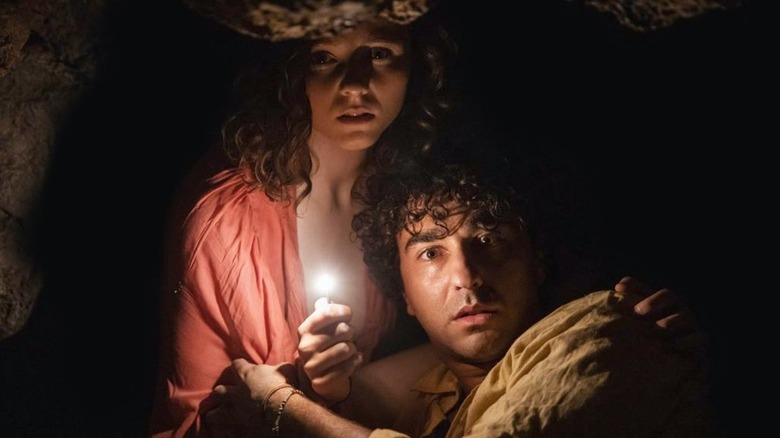
Known for his twist endings and "gotcha" reveals, M. Night Shyamalan's "Old" makes the list because, as his filmography has shown, not all twists are created equal.
Loosely based on the Pierre Oscar Lévy and Frederik Peeters graphic novel, "Sandcastle," Shyamalan's "Old" shows a handful of families visiting a secluded beach island on a dream vacation only to discover the beach is causing them all to age rapidly, and die. The film is a high-stakes thriller for most of its runtime, as people and their chronic illnesses progress rapidly and lead to their natural deaths or murdering of one another. As the twist reveals, the beach is surrounded by electromagnetic material that ages cells about a year every half hour, and the purpose is to quickly test the life cycles of medication being produced by a pharmaceutical company.
"Old" is trial number 73, and despite the deaths, the company is celebrating as the epilepsy prevention drug given to Patricia (Nikki Amuka-Bird) prevented her seizures for "16 years." Fortunately, there's a clean-ish follow-up with siblings Trent and Maddox who are now middle-aged adults escaping the beach and getting the company shut down. For such a big swing reveal, the tidy ending softens the bleak twist and sours the intended horrific impact. (BJ Colangelo)
Unfriended
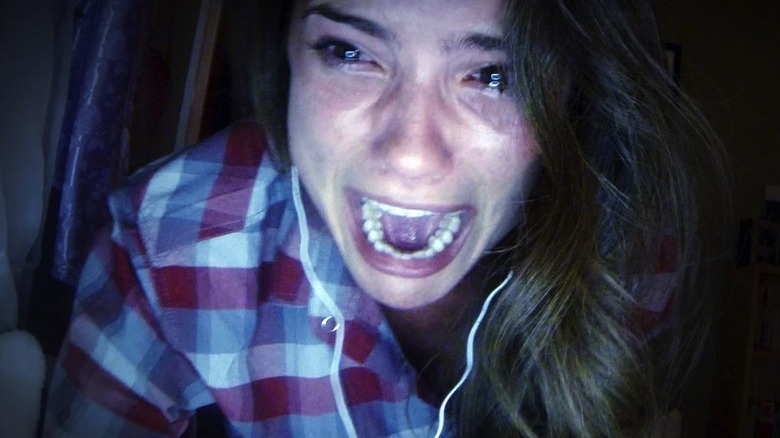
Before "Host" took the concept of webcam-shot horror to new heights, there was "Unfriended." The 2014 horror movie from director Levan Gabriadze starred relative unknowns in a simply-shot but highly effective cautionary tale about the consequences of online bullying. On the one-year anniversary of Laura Barnes' suicide, a group of her classmates — it's hard to call them friends, considering how they talk about her — are hanging out on Skype.
As the night goes on, things start to get weird. Popular Blaire starts getting messages from Laura's old Facebook account. A random user pops up in their Skype chat, uninvited, and presumably unable to be removed. The user starts asking questions, then making demands. Things turn ... violent.
"Unfriended" is a genuinely chilling movie. It ropes you in. But after spending 99% of its very modest hour and 23-minute runtime absolutely chilling you to the bone, it breaks its own internal logic so abruptly that the final scare compromises the rest of the movie's impact. The series would make up for this with its standalone sequel, "Unfriended: Dark Web" in 2018, but it's a shame that an otherwise stellar horror movie dropped the ball in its final minutes. (Ariel Fisher)
Scream 3
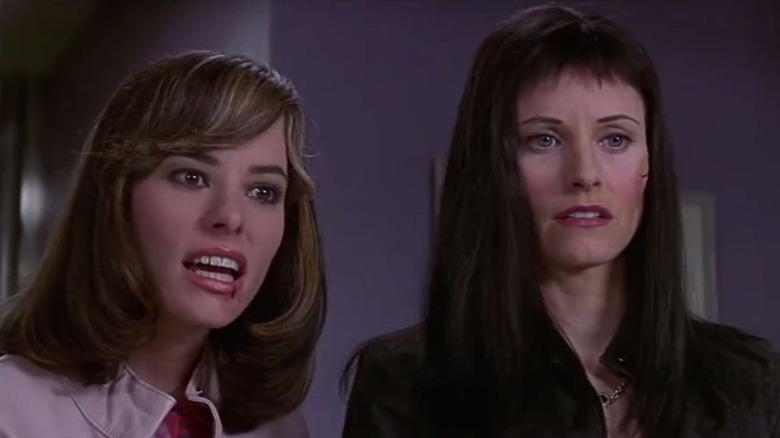
"Scream" is probably the most consistent horror franchise around. That said, "Scream 3" is unquestionably the weakest of the bunch for a few reasons, namely its ending. Where Kevin Williamson had taken the previous two (and eventual fourth) entries to fun, campy, and genuinely intelligent heights, Ehren Kruger's screenplay wound up feeling like a major letdown. Following the genuine joy of getting to see Courteney Cox and Parker Posey play off of each other, we got the first (and so far only) solo killer in the series — her half-brother born out of Maureen Prescott's days as an aspiring actress. All of this is followed by what can only be described as a finale worthy of a Hallmark special.
Dewey awkwardly proposes to Gale after somehow convincing her to give up the part of her career that truly drives her character. Then, Sidney (Neve Campbell) returns home to her fortified compound, happily throwing the front gates open with abandon, running into the house with a lighter sense of self. After Detective Kincaid (Patrick Dempsey) calls her over to watch a random movie, the firmly shut front door randomly swings open thanks to an uncannily strong breeze. Since she's healed now, Sidney leaves it open and joins the group.
It's the most hamfisted conclusion of the entire series and completely betrays not only everything Sidney has ever done as a character, but basic logic and common sense. That's how you get flies, Sidney! (Ariel Fisher)
Pet Sematary (2019)
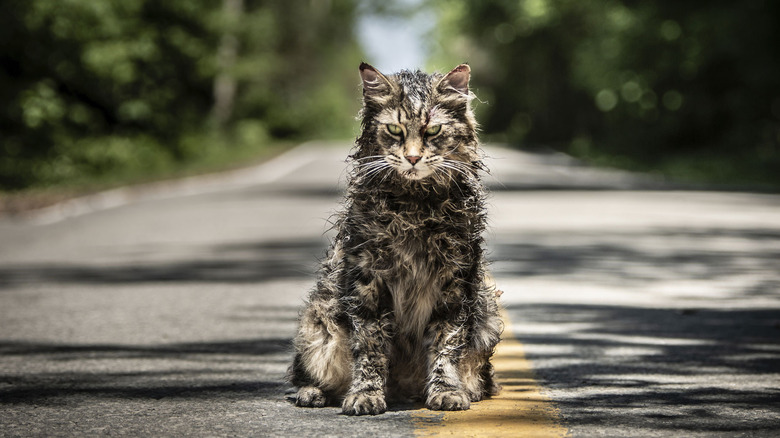
It's understandable why the makers of the "Pet Sematary" remake wanted to change the ending. Audiences were already familiar with the famous conclusion from the original film, which was a faithful adaptation of the final moments in Stephen King's novel. Give them something new! But here, the "something new" doesn't work at all.
Directors Kevin Kölsch and Dennis Widmyer lean hard into the original novel's bleak, unsettling tone, so the downright ridiculous ending clashes hard with everything they had accomplished up to that point. After the movie makes it clear that dragging the body of your loved ones across dangerous and difficult terrain to the ancient burial ground that can awaken the dead is a time-consuming, exhausting process, the film proceeds to go all "Game of Thrones" and start ignoring time and distance just so as many people as possible can get resurrected. The result is a clown car of undead characters, one right after the other, assembling like the Avengers for a final beat that sacrifices the film's internal logic just so it can be different for the sake of being different. The final beat with poor Gage staring down his undead family should be chilling but ends up feeling a bit silly. A sour note in an otherwise strong movie. (Jacob Hall)
47 Meters Down
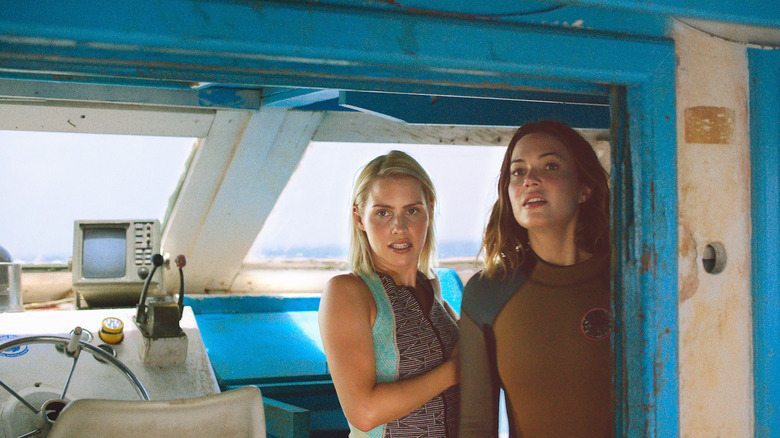
"47 Meters Down" is a movie that shouldn't work as well as it does. It feels like an overly simplistic premise — two sisters go shark cage diving while vacationing in Mexico only for the winch connecting them to the boat to break, sending them plummeting 47 meters down, surrounded by dark water and apex predators. That said, it's the movie's simplicity that makes it completely terrifying and nerve-shredding.
Every single scare in this movie is earned. It takes its time building truly unbearable tension only to have a violent and horrifying release. And on top of it all, it has the potential to end with a truly bleak one-two punch, but it opts for something a little more hopeful that cuts it off at the knees.
After spending hours trapped in and around their cage, with a rapidly dwindling air supply, sisters Lisa (Mandy Moore) and Kate (Claire Holt) presumably get free and make their way to the surface. Before they can be hauled to safety, they're each attacked. After fighting for their lives one last time, they make it onto the boat. Sadly, it quickly becomes clear that Lisa hallucinated their escape due to nitrogen narcosis, and is still trapped 47 meters down. It's a perfectly bleak end to a terrifying movie.
Or it would have been if a team hadn't been sent to rescue her. It's obvious that her sister has died, but saving Lisa feels ... wrong, somehow.
Sometimes, bleaker is better. (Ariel Fisher)
The Last House On The Left (2009)
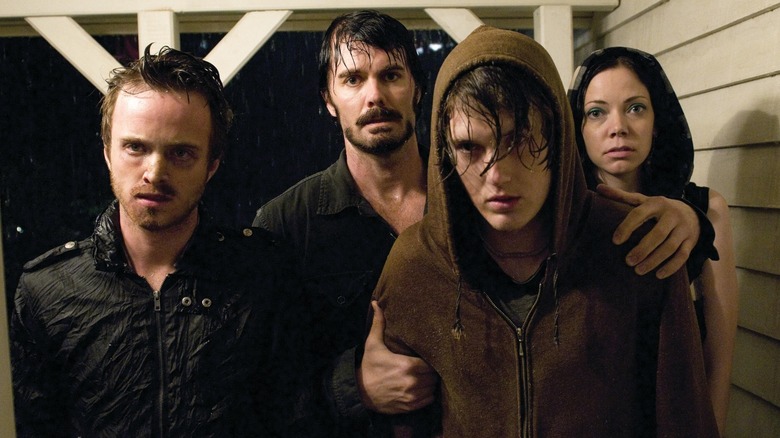
Remaking a film is risky. Remaking a rape-revenge exploitation film from the 1970s for a modern audience is almost impossible. Yet, somehow, director Dennis Iliadis managed to deliver a pretty solid update to Wes Craven's "The Last House on the Left," and injected a layer of empathy lacking from the original.
Both versions of "The Last House on the Left" are hard to watch depending on your own lived experiences, but 2009's "Last House" ends on a far more hopeful note, with Mari alive and reunited with her family, inspiring the belief that even after experiencing abject horror, there's still hope to move forward with your life. Had the movie ended on that note, "Last House" wouldn't have even been nominated for this list. But that's not where it ends.
Considering it's 2009 and we're in the peak of "Saw" mania, the remake ends with Mari's father putting Krug's head, the leader of Mari's tormentors, in a broken microwave, and it explodes. Don't get me wrong, it's a cool-looking kill, but it completely sucks the wind out of the end of the film. The story felt complete! The tonal shift toward hope was achieved! Why is there an unnecessarily random gore scene for no damn reason?! (BJ Colangelo)
Sunshine
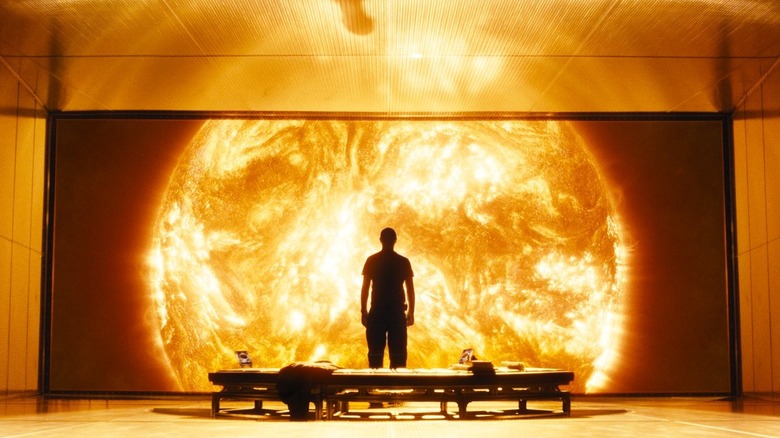
Danny Boyle directing a sci-fi/horror film written by Alex Garland and starring Cillian Murphy, Chris Evans, Michelle Yeoh, Cliff Curtis, Hiroyuki Sanada, and Rose Byrne should be an all-timer, and it does rule pretty hard. The problem is that the tense first two acts, which focus on one strained crew's mission to save the Earth by nuking the sun (it makes sense in the movie) and the hazards of space travel, gives way to an oddly-shot final act of a slasher movie in space that can't come close to the tension and class that preceded it.
You have one member of the crew going so sunmad (a made-up word, but it's apt in the context of the movie) that they stalk the other members of the crew in the final stages of their mission that could determine the fate of every single person on Earth. It's not that this ending sucks, per se. It's effective in its own way. But it's so tonally different from what came before that it's hard to shake off the whiplash. If the finale of this movie had matched the feel of the first two acts, "Sunshine" would be at the forefront of people's minds when discussing the top horror films of the last 20 years. (Eric Vespe)
It Follows
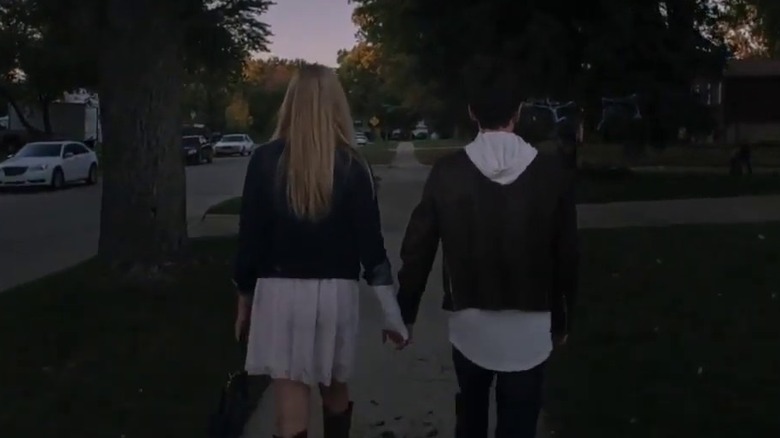
There was a ton of buzz surrounding "It Follows" in 2014, with many who caught the film on the festival circuit declaring it to be something of a game-changer for the horror genre. Finally getting to see David Robert Mitchell's indie horror pic about what's essentially a haunted sexually transmitted disease was incredible. The majority of the movie lived up to the hype, and then some.
And then ... the ending happened.
The big finale of "It Follows" involves a group of characters setting a "Home Alone"–style trap for a monster/ghost/whatever you want to call it, and it just descends into silliness. By the time people started chucking TVs into a swimming pool, audiences were all but mentally checked out. The final moments of "It Follows" genuinely seem as if Mitchell ran out of ideas and couldn't come up with anything better, and it has a hugely negative effect on the movie as a whole. (Chris Evangelista)
Silent Hill
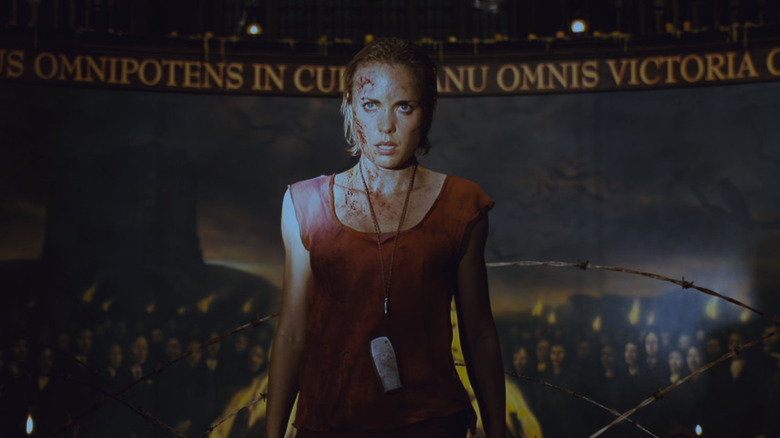
The 2006 "Silent Hill" movie, based on the popular Konami video game series and directed by "Brotherhood of the Wolf" helmer Christophe Gans, is a pretty great, atmospheric horror about a mother and daughter who travel between dimensions and arrive in the evil world of Silent Hill. Sure, the movie mixes characters and plotlines from several games into one narrative, but it works as its own thing. The only major downside is a subplot with Sean Bean that exists only because producers didn't think audiences would watch a movie entirely about female characters, but those scenes are brief.
In the "Silent Hill" video games, you can get different endings depending on how you played, and the movie ending is definitely in line with a "bad" playthrough ending. The best character, Cybil (Laurie Holden), is brutally burned to death. The main protagonists, mother and daughter team Rose and Sharon, escape the town of Silent Hill, but remain trapped in the other dimension. It's a total bummer, especially given everything they've been through. (Danielle Ryan)
Don't Breathe
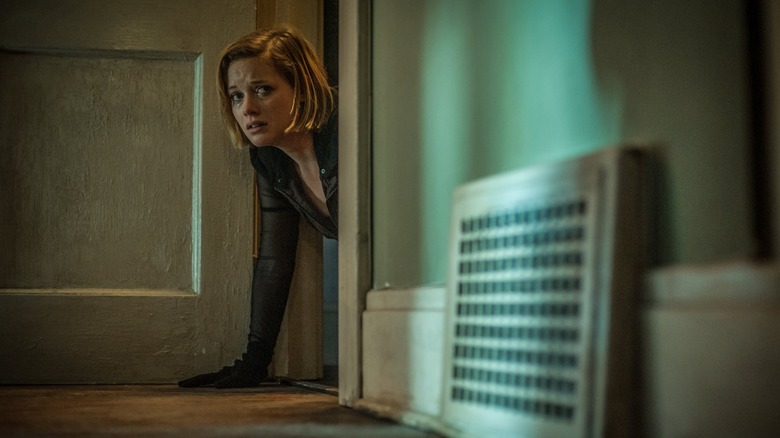
On paper, "Don't Breathe" has everything going for it. Three friends looking to make a quick buck plan to rob an elderly blind man named Norman's home only to get trapped in his house of horrors as he hunts them down like an apex predator. It's a contained thriller with fantastic tension, and a ruthless killer you can't help but root for. That is until this seemingly badass war hero is revealed to be a man far more sinister than part-time 20-something robbers.
In search of an escape after the man kills their friend, Rocky and Alex head to the basement and find a kidnapped woman being held hostage, and impregnated without her consent by Norman in an act of revenge for allegedly killing his daughter in a car accident. During the basement scuffle, Norman accidentally shoots the woman, killing her. Now without a replacement vessel for his new daughter, Norman attempts to replace her with Rocky by trying to impregnate her with a turkey baster filled with his own semen. The action is a specific brand of violation that feels completely out of place within the confines of the rest of the film and feels like an unjustified and unnecessary act of targeted misogynist violence. (BJ Colangelo)
V/H/S/2
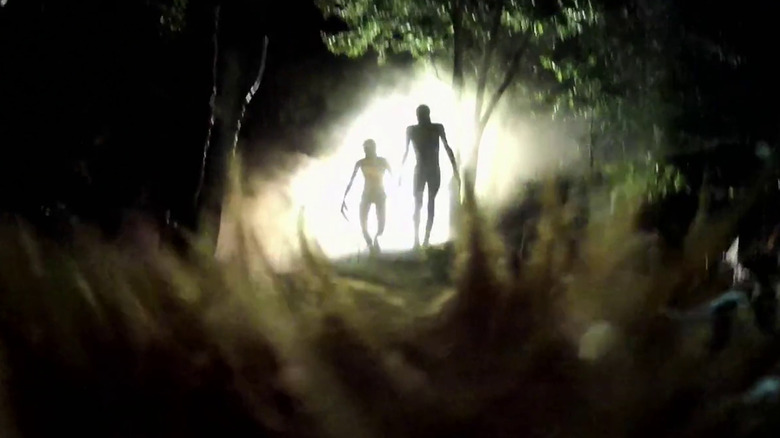
Imagine, if you will, an absolutely delightful, scary, gruesome horror anthology where even the weakest segment is genuinely good and the best segment is an all-timer (looking at you, "Safe Haven"). And then imagine that horror anthology dropping the ball so hard in the literal final seconds of its final segment.
The finale of the found-footage horror anthology sequel "V/H/S/2" mostly rules. It's essentially the birthday party footage from "Signs" extended to tell a complete story, with aliens menacing a slumber party while an adorable dog captures the extraterrestrial chaos from a camera strapped to his collar. It's freaky and fun and funny, like an R-rated riff on the '80s genre movies that felt like they were getting away with something. So it's a total bummer when that segment ends with the dog, our literal POV character, being dropped from a UFO tractor beam mid-abduction and slamming into the ground, with the camera capturing the final twitches of his paws as the image cuts to black.
Kill all the humans in the horror movies! They mean nothing! But you need to have a damn good reason to kill a dog, and to end your otherwise crowd-pleasing horror movie with a genuinely upsetting dog death feels like a crucial, mean-spirited error. (Jacob Hall)
1408
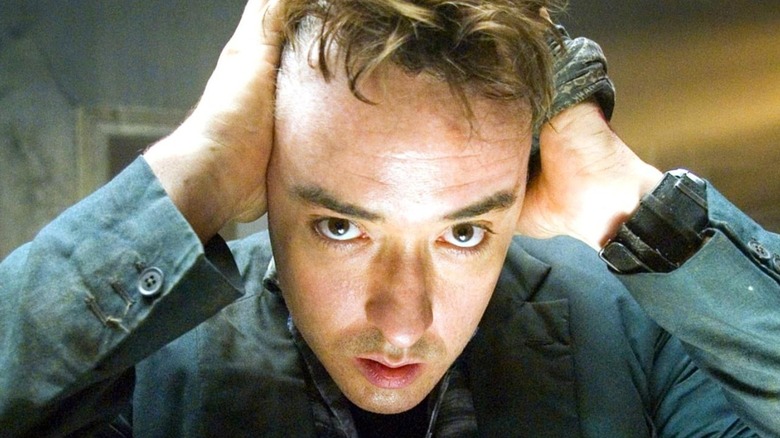
"1408" is a terrific little haunted hotel movie with strong scares and a terrific performance from John Cusack, who carries the entire story on his shoulders. Until the ending. Or rather, the endings. Because "1408" doesn't have just one lousy ending — it has two of them.
In the theatrical ending, Cusack's Mike, a paranormal researcher and writer, survives his ordeal in the haunted Room 1408 at the Dolphin Hotel, emerging from the flames of the destroyed room and ready to pick up the pieces of his ruined life. While rummaging through the handful of items that made it out of the fire, Mike finds his recorder, which features audio of his dead daughter speaking, proving to his estranged wife that his supernatural encounters were real.
It's ... underwhelming, to say the least. A non-ending to a movie that deserves to go out with a bang. It was also a reshoot, and the original ending is the one you'll find if you rent or stream the movie today. In this version, Mike dies in the fire and his charred corpse ghost pops up to startle Samuel L. Jackson's Olin with one final jump scare before we see his spirit seemingly trapped in Room 1408 forever. This ending is an odd blend: a downer ending that also feels profoundly silly, and out of step with the psychological terror of the rest of the film. (Jacob Hall)
Stephen King's It (1990)
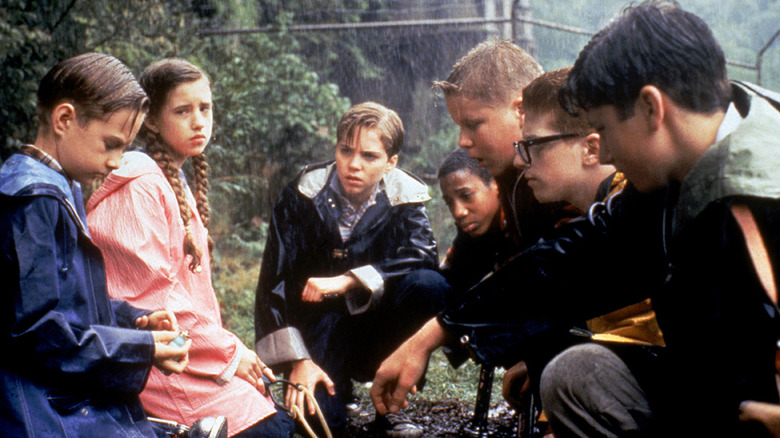
The ending of the "It" miniseries is underwhelming, to say the least, thanks in large part to just how good Tim Curry is as the menacing Pennywise, The Dancing Clown.
He's way scarier than a big rubber spider monster.
There's more nuance in the book than the casual critics of Stephen King's endings will give him credit for, but at the end of the day, the epic story does culminate with a bunch of middle-aged people confronting a giant spider.
In the book, it is made clear that It isn't really a big spider, but that's the closest thing their brains can associate with seeing It's true face without driving them mad. That's very Lovecraftian and can work on the page, but when you're dealing with early '90s effects and a TV miniseries budget, what you get is a creature that doesn't look much better than what you can find at your local Spirit Halloween Store.
Already, it's less exciting to see grown-up, fully capable adults take on a creature than it is to see a group of children facing off against this ultimate evil. The stakes are higher and you're just flat out more invested with the kids' side of the story. But the real failing of the ending to the miniseries rests squarely on those wobbly, squishy spider creature's shoulders. (Eric Vespe)
I Am Legend
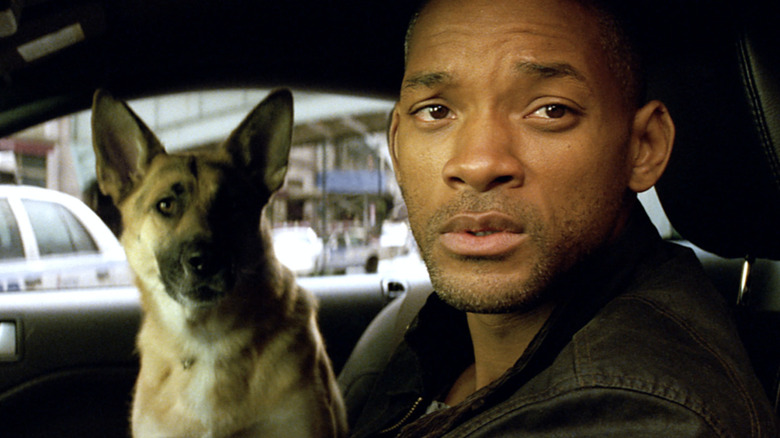
There are movies that frustrate viewers for years on end. Such is the case with "I Am Legend," which was Will Smith making a turn in a big-budget, PG-13 zombie flick. It was a movie overflowing with good ideas. Regardless of whether or not audiences are familiar with the film's source material, it has some truly effective moments (like the scene with the dog, for one), and it features a downright stellar performance from Smith.
The problem is that the ending is just flat-out disappointing on about every level, and it didn't need to be! An alternate ending, though imperfect, was shot and it is, indeed, better than what was included in the theatrical release. That is perhaps the real tragedy here. Stick the landing and this movie is, perhaps, itself legendary. Instead, it's cripplingly aggravating. (Ryan Scott)
It Chapter Two
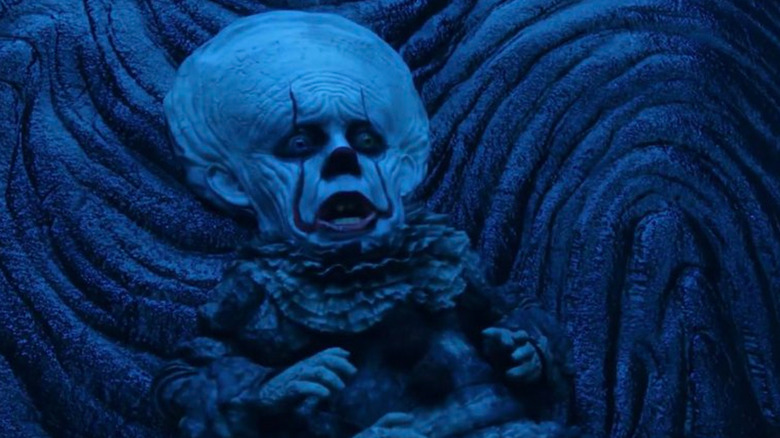
The 2017 film adaptation of Stephen King's "It" changes some big things about the source material, but it remains true to King's overall vision. The end result is one of the better King adaptations; a film that understands that the secret to the master of horror's work isn't just his scares, but also his well-drawn, relatable characters. You can't help but become charmed by the Losers Club, even when they're acting like dumb kids.
"It" was such a big hit that the sequel, "It: Chapter Two," was able to attract some big talent: Jessica Chastain, Bill Hader, James McAvoy, and so on. And yet, even though almost everyone involved with creating the first film came back for this sequel, "It: Chapter Two" is a strange mess. The tone is all over the place — what the hell is that "Angel Of The Morning" needle-drop? — and the adult Losers are pale imitations of their young counterparts.
What's worse is that the film jettisons King's ending for a conclusion where the Losers Club essentially bullies Pennywise to death. They gather around and keep calling him a clown until he shrivels up and dies. And ... that's it.
To be fair, King's ending — where the Losers fight a giant spider-alien and rip out its heart — isn't the best, either. But it's certainly better than whatever the hell is going on here. (Chris Evangelista)
High Tension
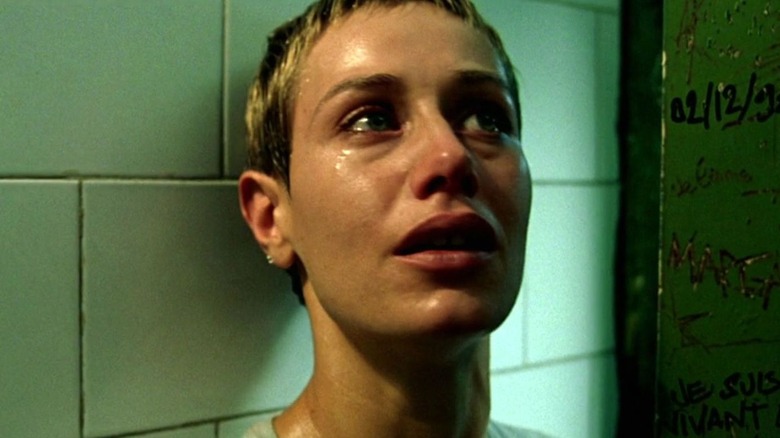
Alexandre Aja's "High Tension," one of the early entries in the New French Extremity, is a blood-soaked killing spree responsible for some of the most viscerally horrific moments of 2000s horror cinema.
Two friends, Marie and Alex, are visiting Alex's parents for a weekend away when a serial killer shows up and massacres Alex's entire family, forcing the two girls on the run. The killer continues a relentless pursuit, slaughtering anyone that gets in the way in an increasingly brutal manner. However, as the police investigate the slew of mayhem, they review the security footage from the butchering of a store clerk from a gas station where Marie and Alex had stopped, to reveal that the man we had been seeing kill everyone was a projection of Marie's hallucinations and that Marie had in fact been the one committing the murders all along.
This seemingly terrified woman is actually a delusional murderer in love with her friend Alex and has chosen to kill anyone who could possibly come between them. On its face, the twist is fine, but considering the movie offers zero indication of the outcome, it feels tacked on and digs up a series of unexplainable plot holes. The ending completely misses the mark and spoils all of the brilliant storytelling leading up to the lackluster reveal. (BJ Colangelo)
Read this next: All 8 'Conjuring' Universe Films Ranked From Worst To Best
The post 25 Terrible Endings That Ruined Good Horror Movies appeared first on /Film.
0 Commentaires